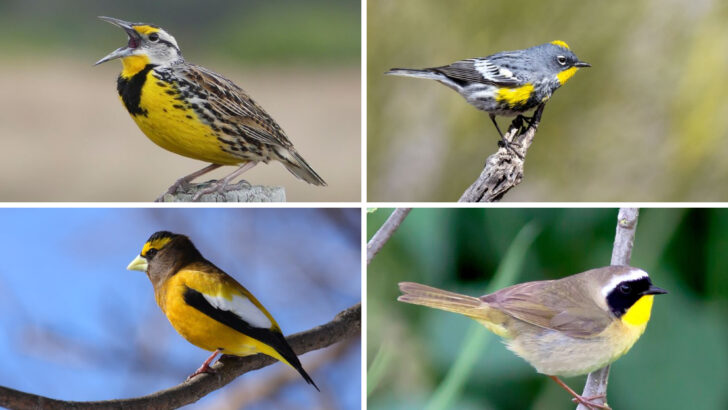Yellow and black birds are nature’s very own showstoppers. They flaunt stunning colors that could rival any artist’s palette, leaving you in awe with every graceful flutter.
But these birds aren’t just about looks—they bring personality, charm, and wonder wherever they go. Their bright plumage is a signal of beauty, but also a reminder of nature’s hidden gems, just waiting to be discovered.
Ready to meet these feathered marvels? From the bold and striking to the subtle and elegant, these 18 yellow and black birds are more than just eye candy—they’re an invitation to appreciate the incredible diversity of life around us. Get ready to fall in love with some of the most beautiful creatures that grace our skies!
American Goldfinch
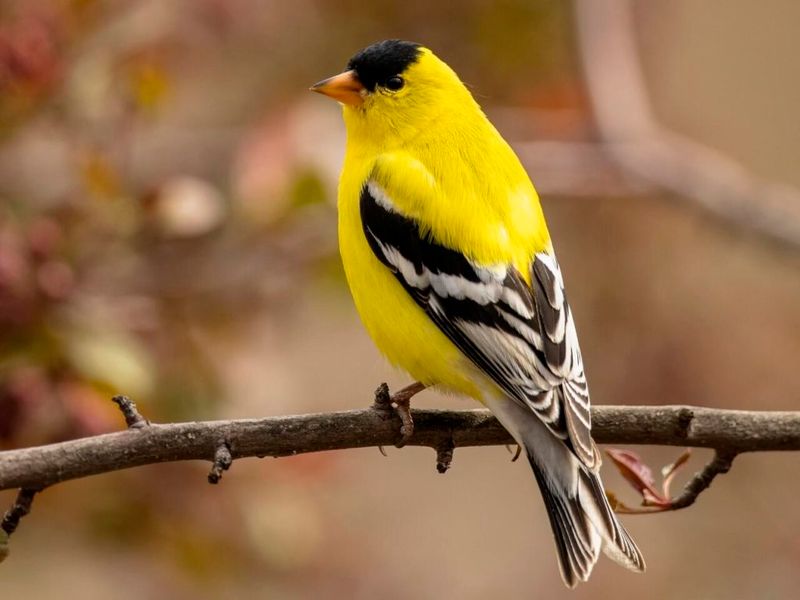
The American Goldfinch is a small, vibrant bird known for its striking yellow plumage contrasted by bold black wings. It often frequents gardens and meadows, bringing a splash of color as it flits about.
This delightful bird is a seed eater, often spotted munching on sunflowers and thistles. During the spring, its cheerful song fills the air, creating a lively atmosphere in any landscape.
With a fondness for open spaces, the American Goldfinch is a joy to observe in flight, showcasing its acrobatic skills and radiant hues.
Baltimore Oriole
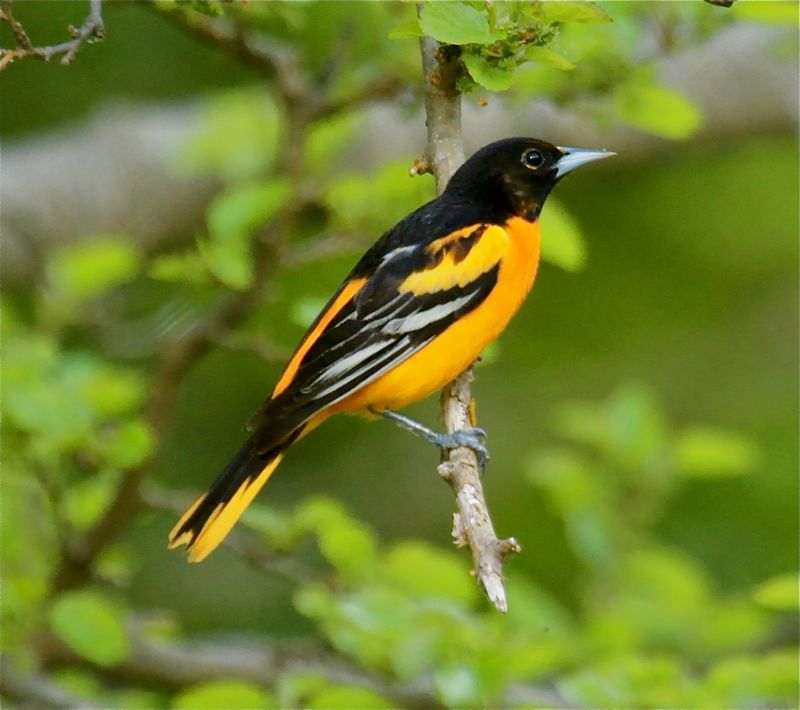
The Baltimore Oriole dazzles with its vibrant orange-yellow body and striking black head, creating a beautiful contrast that catches the eye. These birds are often seen in deciduous forests and suburban areas during spring.
Orioles have a sweet tooth, often visiting feeders for nectar and fruits. Their flutelike song is a familiar tune in their natural habitat, adding to their enchanting presence.
Known for their intricate hanging nests, Baltimore Orioles are remarkable architects, crafting their homes high in tree canopies for safety and seclusion.
Western Tanager
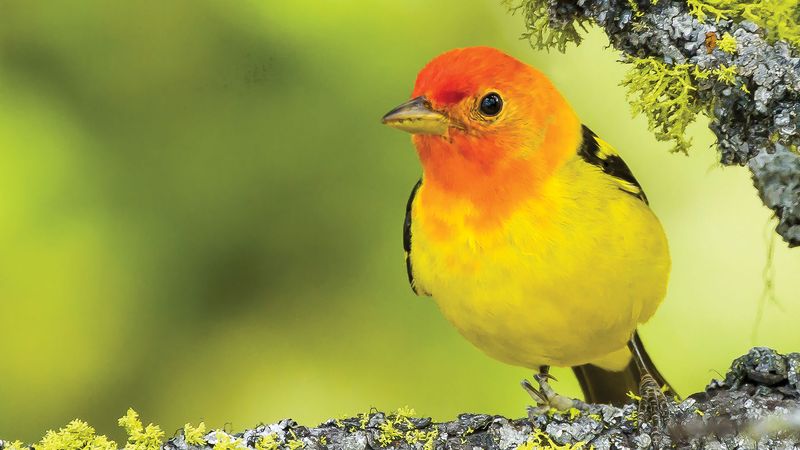
The Western Tanager is a captivating bird known for its vivid yellow body and contrasting black wings. Often found in coniferous forests, it adds a splash of color to the green foliage.
This bird’s diet consists mainly of insects and berries, making it a beneficial presence in its habitat. Its melodious song resonates through the woods, offering a treat for any bird enthusiast.
During the breeding season, the male’s colors become even more intense, making it a spectacular sight against the lush, natural backdrop.
Yellow-headed Blackbird
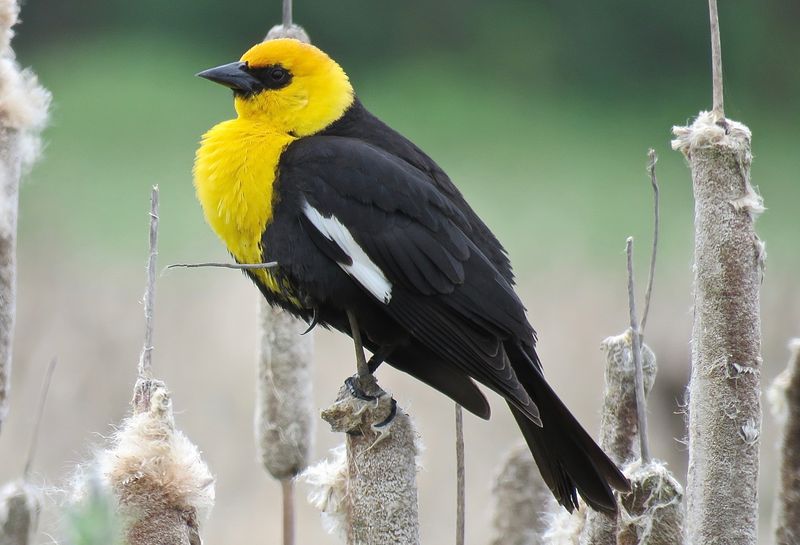
The Yellow-headed Blackbird stands out with its bright yellow head and contrasting black body. Often found in wetlands, it brings color and life to marshy landscapes.
This bird is known for its distinctive call, which echoes across its watery domain, making its presence known. During breeding season, it gathers in colonies, creating a bustling avian community.
As an insect eater, the Yellow-headed Blackbird plays a crucial role in controlling pest populations, contributing to the ecological balance of its environment.
Common Yellowthroat
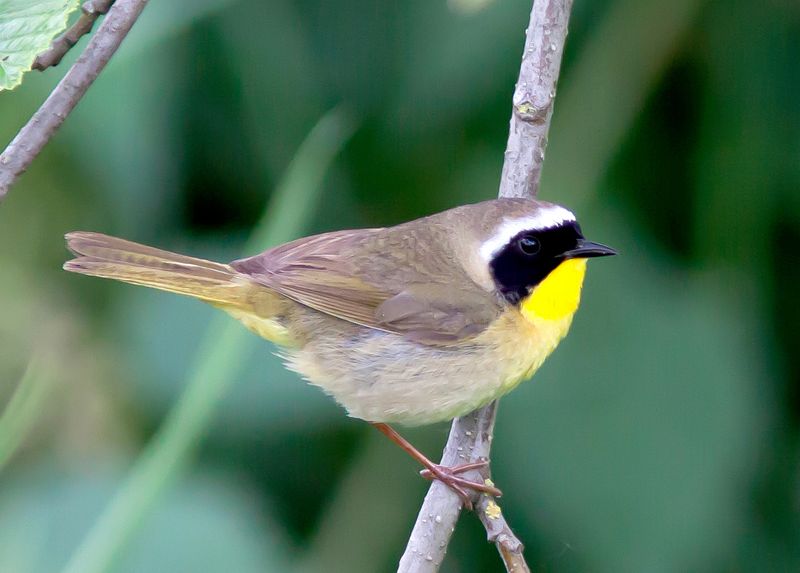
The Common Yellowthroat is a charismatic warbler with a vivid yellow body and a distinctive black mask across its face. This small bird is a frequent visitor to marshes and wetlands.
Known for its energetic song, often described as a “witchety-witchety-witchety,” it adds a lively soundtrack to its habitat. The Common Yellowthroat is an insect hunter, adept at navigating dense foliage in search of prey.
Observing this bird is a treat, as it darts in and out of the reeds, its bright plumage a beacon in the greenery.
Eastern Meadowlark
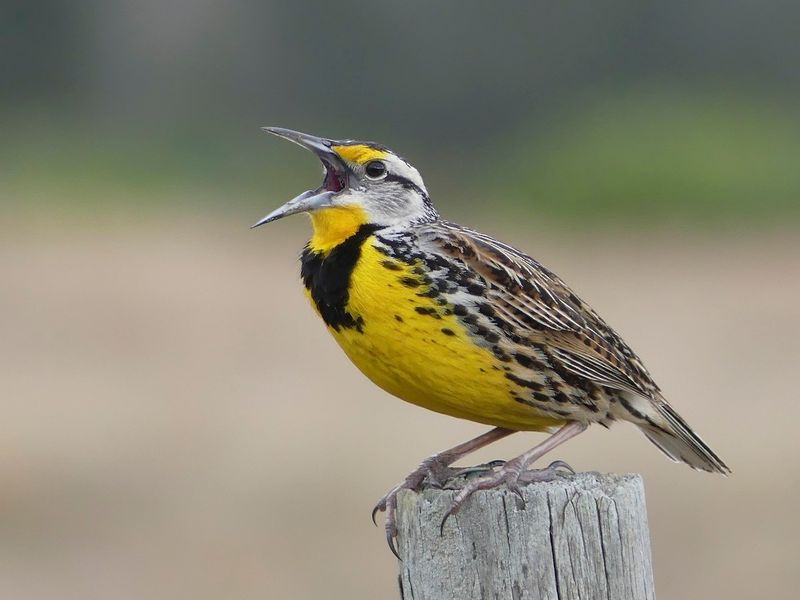
The Eastern Meadowlark is a striking bird known for its bright yellow underparts and the distinctive black V-shaped band across its chest. Typically found in open fields and meadows, it is a symbol of rural landscapes.
This bird has a flute-like song that resonates beautifully across open spaces, often serving as a herald of spring. Its diet consists mainly of insects and seeds, making it a valuable presence in agricultural areas.
With its robust build and vivid colors, the Eastern Meadowlark is a true spectacle in any grassy terrain.
Scarlet Tanager
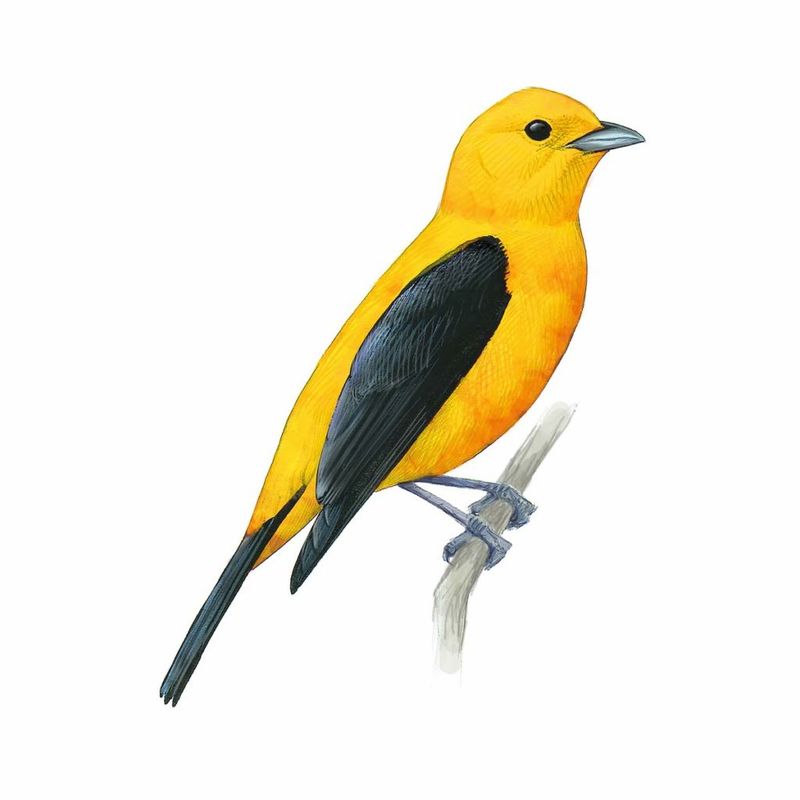
The Scarlet Tanager is a vivid bird, with males displaying a bright yellow body and stark black wings during the breeding season. Found in deciduous forests, these birds add vibrant color to the landscape.
Their diet primarily includes insects and fruits, allowing them to thrive in their forest habitats. The male’s song, a series of chip-burr notes, can be heard echoing through the trees.
Observing a Scarlet Tanager is a special experience, as their bright plumage and distinctive calls offer a genuine connection to nature’s wonders.
Hooded Warbler
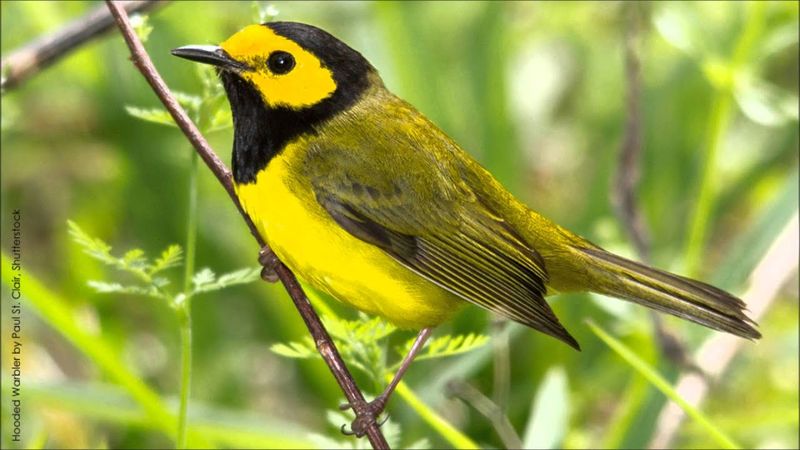
The Hooded Warbler, with its bright yellow body and distinctive black hood, is a delightful sight in deciduous forests. This small bird is often found flitting through the understory in search of insects.
Its song is a cheerful “ta-wit ta-wit ta-wit tee-yo,” creating a lively atmosphere in its forest home. The Hooded Warbler is a master of camouflage, skillfully blending into the foliage despite its bright colors.
Birdwatchers cherish spotting this warbler, drawn by its unique appearance and energetic antics in the trees.
Yellow-rumped Warbler
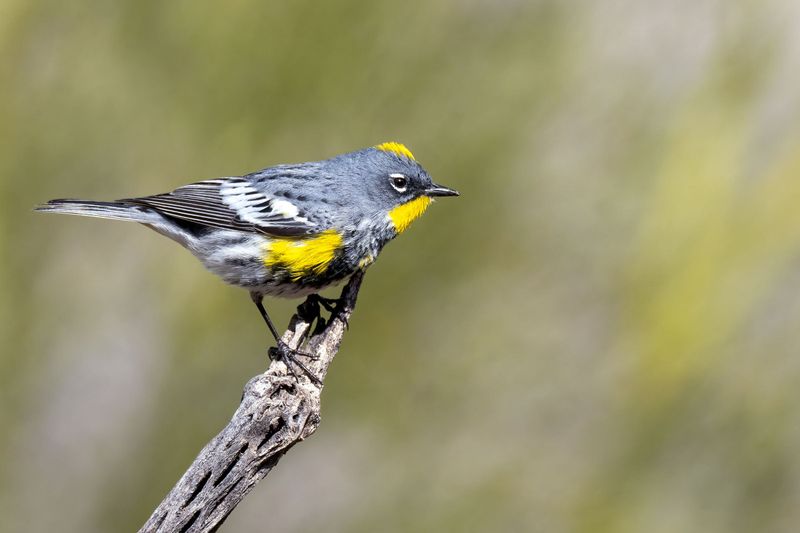
The Yellow-rumped Warbler is a versatile bird, easily recognized by its distinct yellow patches and contrasting black markings. Found in mixed forests, it adapts well to diverse environments.
Its diet is varied, including insects and berries, allowing it to thrive year-round. The Yellow-rumped Warbler’s call is a series of sharp “chip” notes, often heard before the bird is seen.
This warbler’s adaptability and striking appearance make it a favorite among bird enthusiasts, who enjoy observing its dynamic behavior in natural settings.
Magnolia Warbler
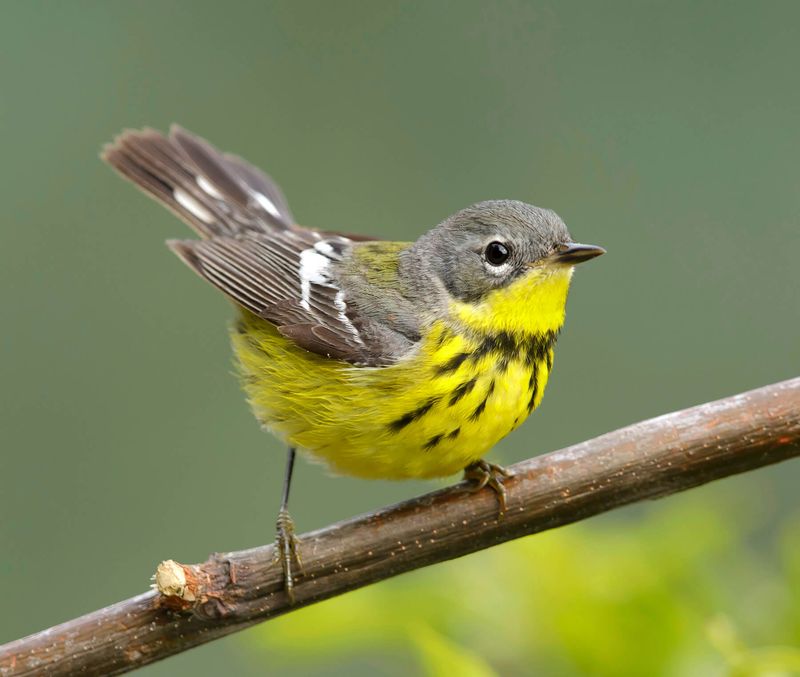
The Magnolia Warbler charms with its bold yellow and black stripes, making it a standout in its forest habitat. Often seen in magnolia trees, its colors are a perfect match for its surroundings.
This small bird feeds primarily on insects, darting through the branches with agility and grace. Its song is a soft, sweet melody that complements the tranquility of its environment.
Birdwatchers treasure encounters with the Magnolia Warbler, as its vivid pattern and gentle song create a memorable experience amidst the spring blooms.
Wilson’s Warbler
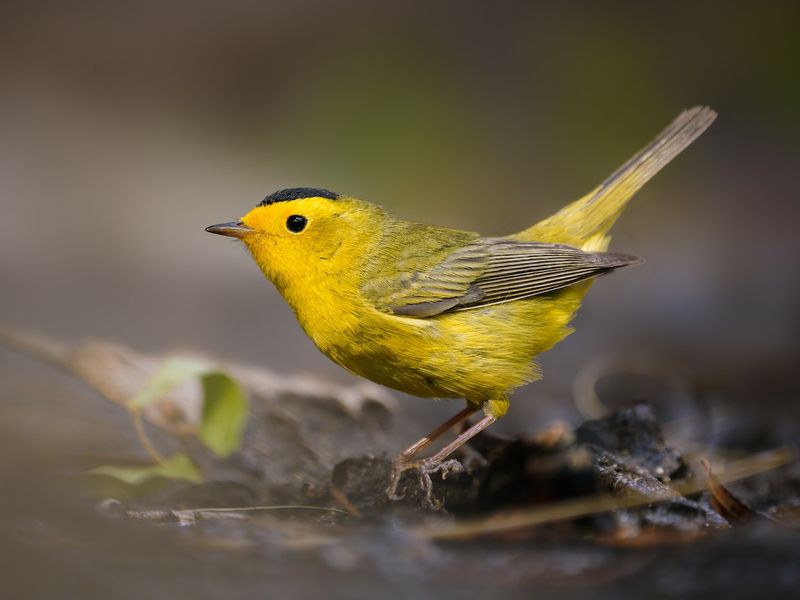
Wilson’s Warbler is a small, lively bird, distinguished by its bright yellow body and unique black cap. Found near streams and wetlands, it brings a splash of color to these serene environments.
This warbler’s diet consists mainly of insects, which it skillfully hunts among the foliage and branches. Its song, a rapid series of chirps, adds a vibrant soundtrack to its watery habitat.
Observing Wilson’s Warbler is always a treat, as its energetic movements and distinctive appearance capture the essence of nature’s playful spirit.
Yellow-breasted Chat
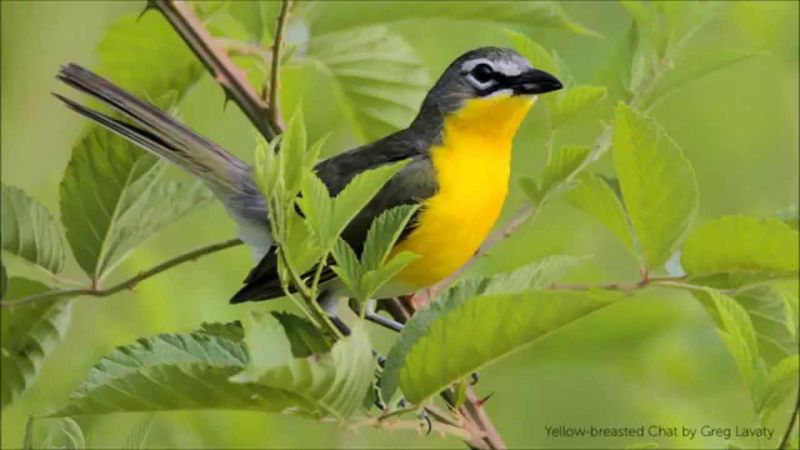
The Yellow-breasted Chat is notable for its bright yellow chest and subtle black markings, making it a striking presence in dense shrubbery. Often heard before seen, its varied calls include whistles and cackles.
This bird is adept at remaining hidden, often dwelling in thick bushes where it forages for insects. Its diet also includes berries, sustaining it through various seasons.
The Yellow-breasted Chat’s elusive nature and complex vocalizations make it a fascinating subject for bird enthusiasts, eager to catch a glimpse of this vibrant songster.
Blackburnian Warbler
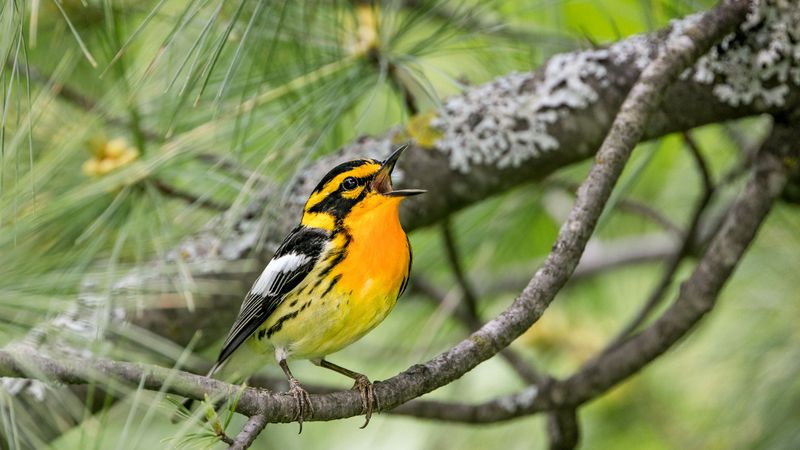
The Blackburnian Warbler dazzles with its bright yellow and black striped body, an impressive sight high in the forest canopy. This bird is often associated with mature coniferous and mixed forests.
Known for its high-pitched song, the Blackburnian Warbler’s vocalizations are a delightful addition to any woodland setting. Its diet mainly consists of insects, which it expertly plucks from branches and leaves.
Spotting a Blackburnian Warbler is a rewarding experience, as its combination of vibrant colors and melodic song offers a captivating glimpse into the avian world.
Yellow-throated Vireo
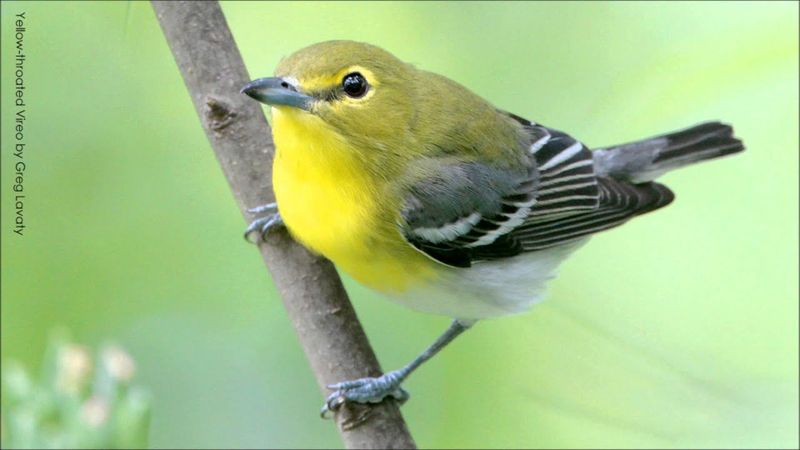
The Yellow-throated Vireo is a charming bird, recognized by its bright yellow throat and contrasting black wing bars. It frequents leafy trees in forests and woodlands.
This bird’s melodious song, a series of rich, warbling notes, is often heard in the treetops. Its diet consists of insects and berries, supporting its active lifestyle.
Observing the Yellow-throated Vireo is a joy for birdwatchers, who appreciate its beautiful colors and harmonious calls, making it a standout presence in any verdant setting.
Black-and-yellow Broadbill
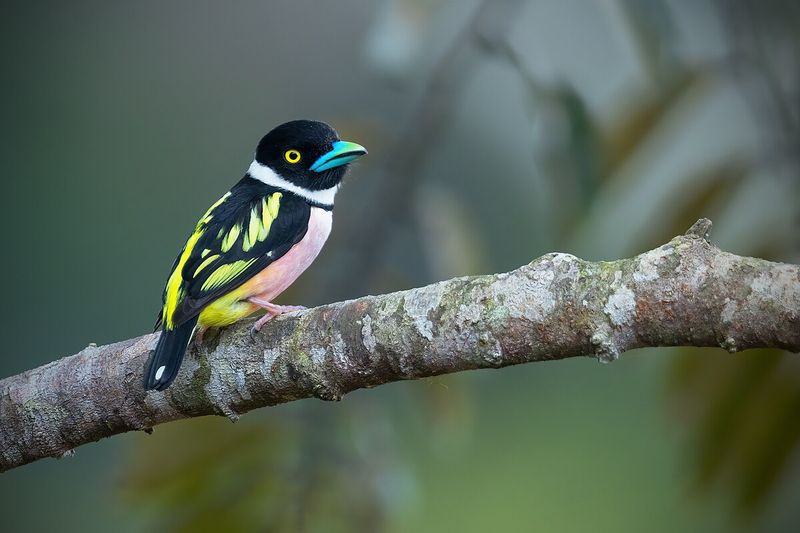
The Black-and-yellow Broadbill is an exotic bird, found in the lush rainforests of Southeast Asia. Its distinct black and yellow pattern makes it a striking presence in its habitat.
This bird is known for its diverse diet, including insects and small fruits, which it finds in the dense foliage. The Black-and-yellow Broadbill’s call is a series of soft whistles, echoing through the tropical canopy.
Observing this broadbill is a unique experience, offering a glimpse into the rich biodiversity of its rainforest home, where vibrant colors and sounds abound.
Golden-winged Warbler
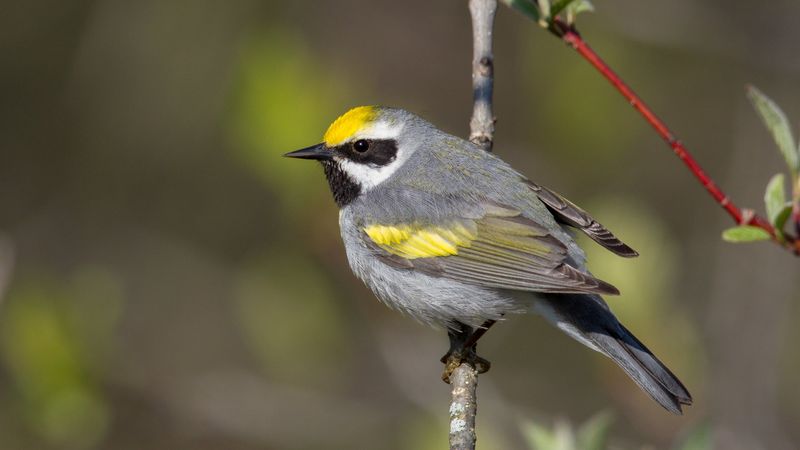
The Golden-winged Warbler is a striking bird, notable for its bright yellow wing patches and contrasting black throat. Often found in shrubby areas, it adds a splash of color to the landscape.
This warbler’s song, a buzzing “bee-bzz-bzz,” is a familiar sound in its habitat. Its diet mainly consists of insects, which it expertly hunts in the undergrowth.
Birdwatchers cherish encounters with the Golden-winged Warbler, as its vivid colors and distinctive song offer a delightful glimpse into the world of migratory birds.
Yellow-bellied Sapsucker
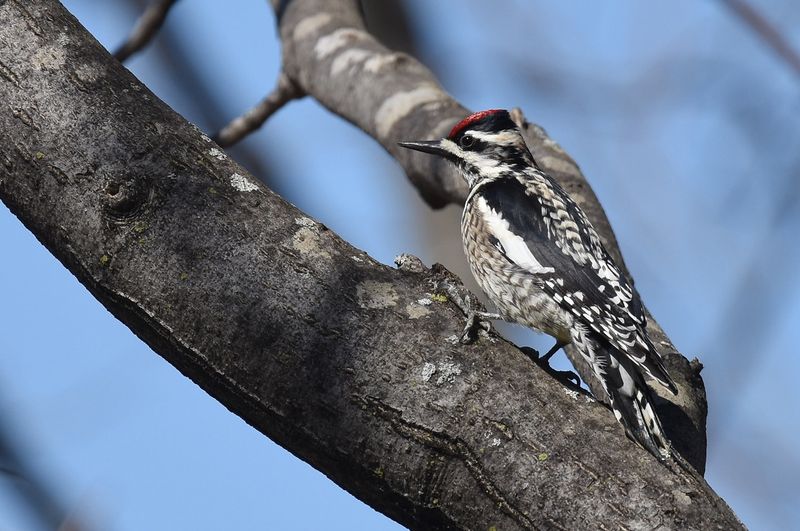
The Yellow-bellied Sapsucker is a fascinating woodpecker, recognized by its yellow belly and distinctive black markings. Found in mixed forests, it plays a vital role in its ecosystem by drilling sap wells in trees.
Its diet includes insects attracted to the sap, as well as the sap itself. The sapsucker’s rhythmic drumming is a familiar sound, announcing its presence in the woodland.
Observing a Yellow-bellied Sapsucker is a captivating experience, showcasing nature’s intricate connections and the bird’s unique adaptations for survival.
Evening Grosbeak
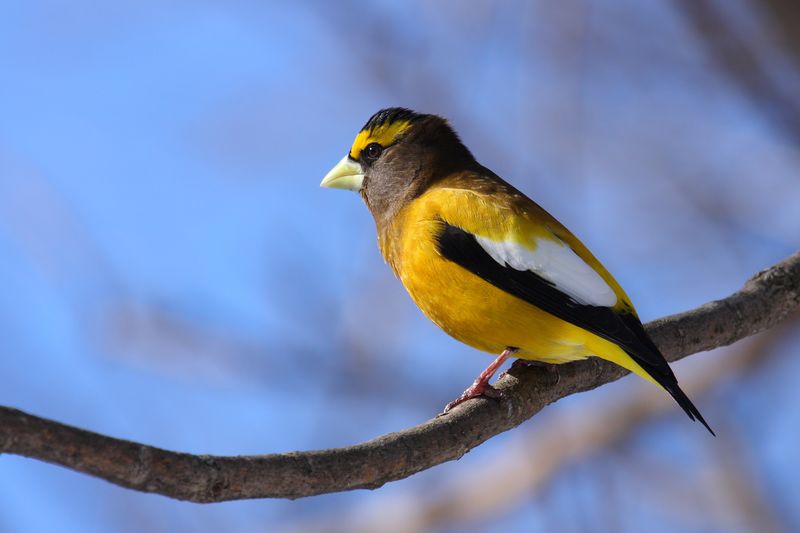
The Evening Grosbeak is a robust bird, known for its striking yellow body and contrasting black wings. Often seen in coniferous forests, it adds a flash of color to the wintry landscape.
This bird’s diet includes seeds, insects, and berries, making it an adaptable forager throughout the seasons. Its distinctive call, a series of clear, musical notes, resonates through the trees.
Bird enthusiasts appreciate the Evening Grosbeak for its vibrant appearance and tuneful calls, making it a cherished sight during birdwatching adventures.

